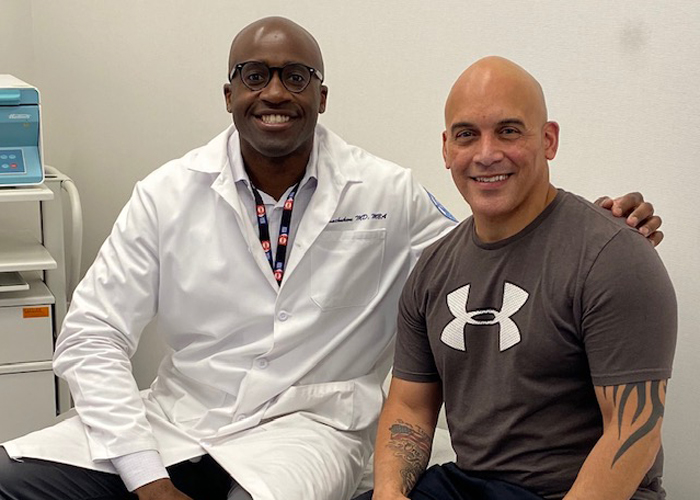Meniscus Root Repair Surgeon

Are you an athlete who participates in sports that involve running and jumping? If so, you may be at risk of tearing the root of your meniscus. A meniscus root tear can occur due to a traumatic event or degeneration. Meniscus root repair surgeon, Doctor Benedict Nwachukwu provides diagnosis as well as surgical and nonsurgical treatment options for patients in Manhattan, New York City, NY who need meniscus root repair surgery. Contact Dr. Nwachukwu’s team today!
What is a meniscus root tear?
The menisci in the knee are two c-shaped pieces of fibrocartilage that act as shock absorbers. Keeping each meniscus in place are two “roots” that attach to the tibia (shin bone). The roots of the meniscus are responsible for transmitting weight evenly across the surface of the tibia. They are also important to the stability and function of the knee, keeping the meniscus in place. A meniscus root tear occurs when one or both of these roots tear away from the bone. Most meniscus root tears occur very close to the root near the meniscus itself and are called radial root tears. This specific type of tear makes up 90% of all meniscal root tears. Dr. Benedict Nwachukwu, orthopedic knee surgeon has extensive experience in treating meniscus root tears and can help patients in Manhattan, Brooklyn, New York City and the surrounding New York boroughs.

What are the symptoms of a meniscus root tear?
Immediate and intense knee pain can signal a meniscus root tear, especially with pain at the back of the knee. Patients often report hearing a “pop” at the time of injury. Other common symptoms include limping, a change in the patient’s gait and the inability to put weight on the affected knee.
How is a meniscus root tear repaired?
The goal of a meniscus root tear repair is to locate the torn root and tack it back down to the bone using strong sutures. It is very important for proper healing, that the placement of the root matches the original “Footprint” or attachment site. To accomplish this goal, Dr. Nwachukwu drills a small hole from the outside of the tibia (shin bone) into the knee joint next to the natural attachment of the meniscus root. Next, sutures are placed in the meniscal attachment and threaded through the hole in the tibia. The sutures are anchored to the tibia in order to stabilize the meniscus root attachment. If scar tissue is present, Dr. Nwachukwu will clean up the area so the knee is allowed to move through its entire range of motion. This technically challenging procedure should only be done by an orthopedic knee expert like Dr. Nwachukwu who has had extensive experience in performing the meniscal root tear repair correctly.


What is the recovery like after meniscus root repair?
Dr. Nwachukwu and his team will have an individualized recovery program for the best healing success after your meniscal root repair. Patients in Manhattan, Brooklyn, New York City and the surrounding New York boroughs can expect a variation of the following:
- Patients are partial weight bearing for the first 4 weeks and then during weeks 4-6 are progressed to full weight-bearing
- Range of motion exercises occur more slowly than a standard meniscus repair and will continue for the first 4 weeks.
- Weight bearing as tolerated after 6 weeks.
- Squatting, lifting from a squat and sitting cross-legged should be avoided for 3-4 months.
- Stationary biking is allowed after 6-weeks with Dr. Nwachukwu’s approval and assessment of healing.
- Full recovery usually takes 6 months but can take up to 1 year.
For more information on meniscus root tears of the knee and meniscus root repair surgery, please contact the office of Benedict Nwachukwu, MD, orthopedic knee specialist serving Manhattan, New York City and the surrounding New York boroughs.
